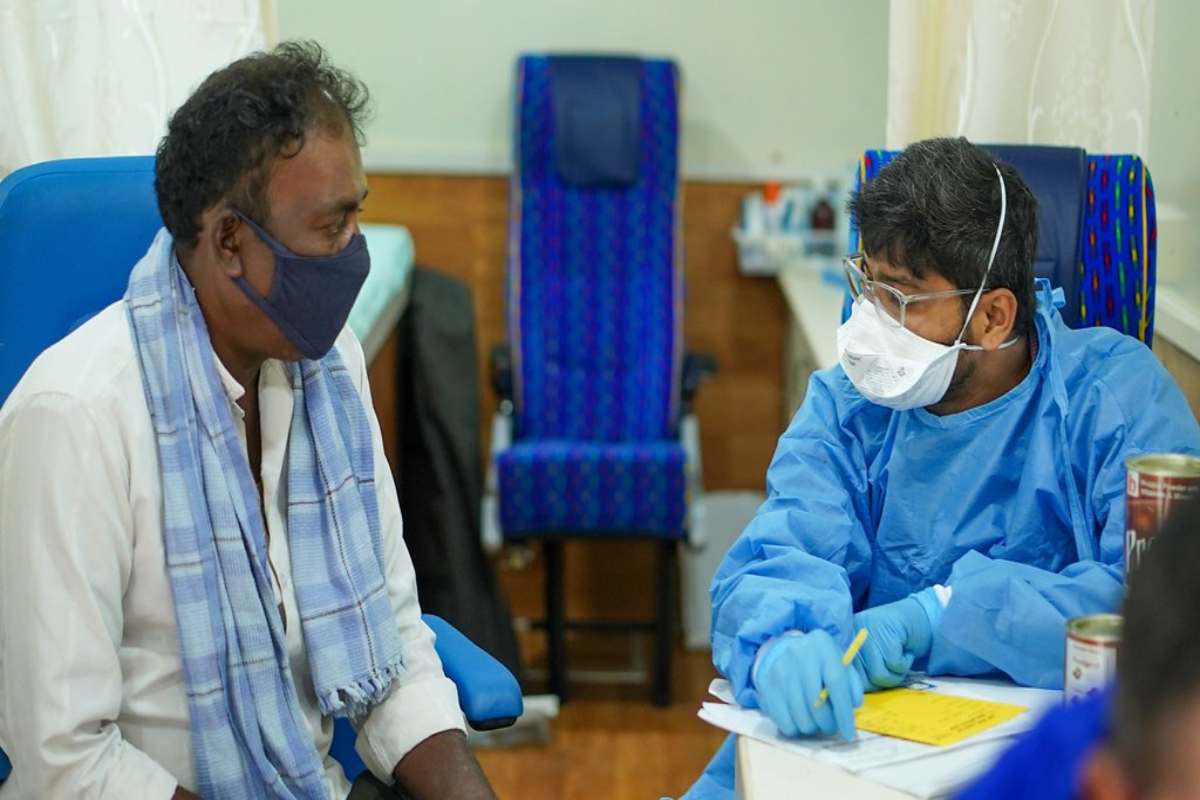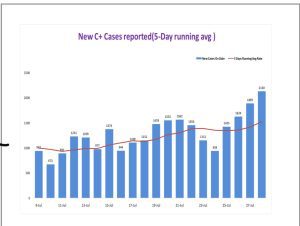Yes, a silent wave is on, say doctors and scientists closely watching the Covid-19 situation in the state and the rising number of cases.

July’s month data from GISAID and Karnataka reveals BA.5 and its sublineages BA.2 and BA.2.75 make up a large proportion of the cases. (File Photo)
Karnataka is reporting 1,000 Covid-19 cases daily on average for the last seven days. A total of 29 people have died due to Coronavirus in the last 30 days.
The state, as of Sunday has a total of 11,105 active Covid 19 cases.
The question that ow arises is: Are we in the middle of a silent wave?
Yes, say doctors and scientists who are closely watching the Covid-19 situation in the state.
Infectious Disease Research Foundation scientist Dr Chitra Pattabhiraman, talking to South First, said, “It feels like we are in the ‘middle of a wave’. The numbers are not reflecting this as people are opting for home tests and self-isolation.”
Agreeing with Pattabhiraman, Dr Rajeev Jayadevan, who is advising the Covid task force at IMA Kochi, Kerala, said, “Yes. We are in the middle of a wave. The problem is that there is very limited testing being conducted.”

New covid cases reported in Karnataka/Supplied
Bengaluru is reporting 800 to 1,000 cases per day. However, as per the data provided by the state war room, Covid cases in other districts are slowly showing an upward trend.
Karnataka on average is testing 32,000 people per day.
A senior doctor from the Technical Advisory Committee (TAC) for Covid-19, requesting anonymity, told South First: “The number of infections is going up. There are about 13-14 districts, including Bengaluru urban, where the number of cases has surged recently.”
“The infection rates in these districts are high, but where is the Covid-appropriate behavior? If testing numbers in the districts are increased, numbers will increase,” the doctor added.
According to Pattabhiraman, July’s data from GISAID and Karnataka reveals BA.5 and its sublineages BA.2 and BA.2.75 make up a large proportion of the cases. GISAID is a global science initiative that provides open access to genomic data of influenza viruses and the coronavirus responsible for the Covid-19 pandemic.
As per the bulletin released by the State Health Department, Karnataka has reported 51.90 percent BA.2 lineage of the Omicron variant and 15.88 percent of BA.5 sublineage. A total of 919 samples have been sequenced in July.
The other Omicron sublineages have constituted the rest of the cases that were genome sequenced in the state.
According to epidemiologists, a large number of people are carrying out antigen tests at home and not visiting laboratories for the RT-PCR tests.
Epidemiologists fear that self-testing makes it difficult for them to understand the rate of spread of any new sub-lineage of a variant, or the emergence of a new variant.
They added that due to self-testing, cluster cases may also be missed, leaving no scope for genome sequencing.
TAC members said that the hospitalisation of Covid-19 cases is still low. Those affected are isolating themselves at home and getting cured without the need for hospitalisation, or are consulting private doctors but not getting tested for Covid-19.
Jayadevan added that the number of hospitalisation was low due to population-based immunity. “A majority of people have been vaccinated or have been infected in the past, which is the reason the severity of infection is low and does not require hospitalisation.”
However, he said that the quantum of infection in the community is huge.
Though about 1,000 cases are being reported in the state every day, the TAC in Karnataka is wary about calling it a wave.
“The number of infections is going up as people are not following Covid-appropriate behaviour strictly and people’s immunity from past infection and vaccination is waning. We can’t call it a wave though,” a TAC member said.
TAC, however, agreed that an increase in the number of deaths is something that needs to be looked into.
“Compared to May and June, the number of deaths has gone up in July. The state has seen 29 deaths last month. Among the deceased, a majority are ILI (influenza-like illness) cases. TAC has asked for death audits to be done. The majority of the deaths have happened in private hospitals,” a TAC member told South First.
The deaths have been reported from Bengaluru Urban, Dakshina Kannada, and Uttara Kannada districts.

May 06, 2024

May 06, 2024

May 06, 2024

May 06, 2024

May 06, 2024

May 06, 2024